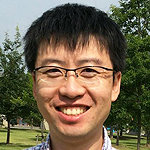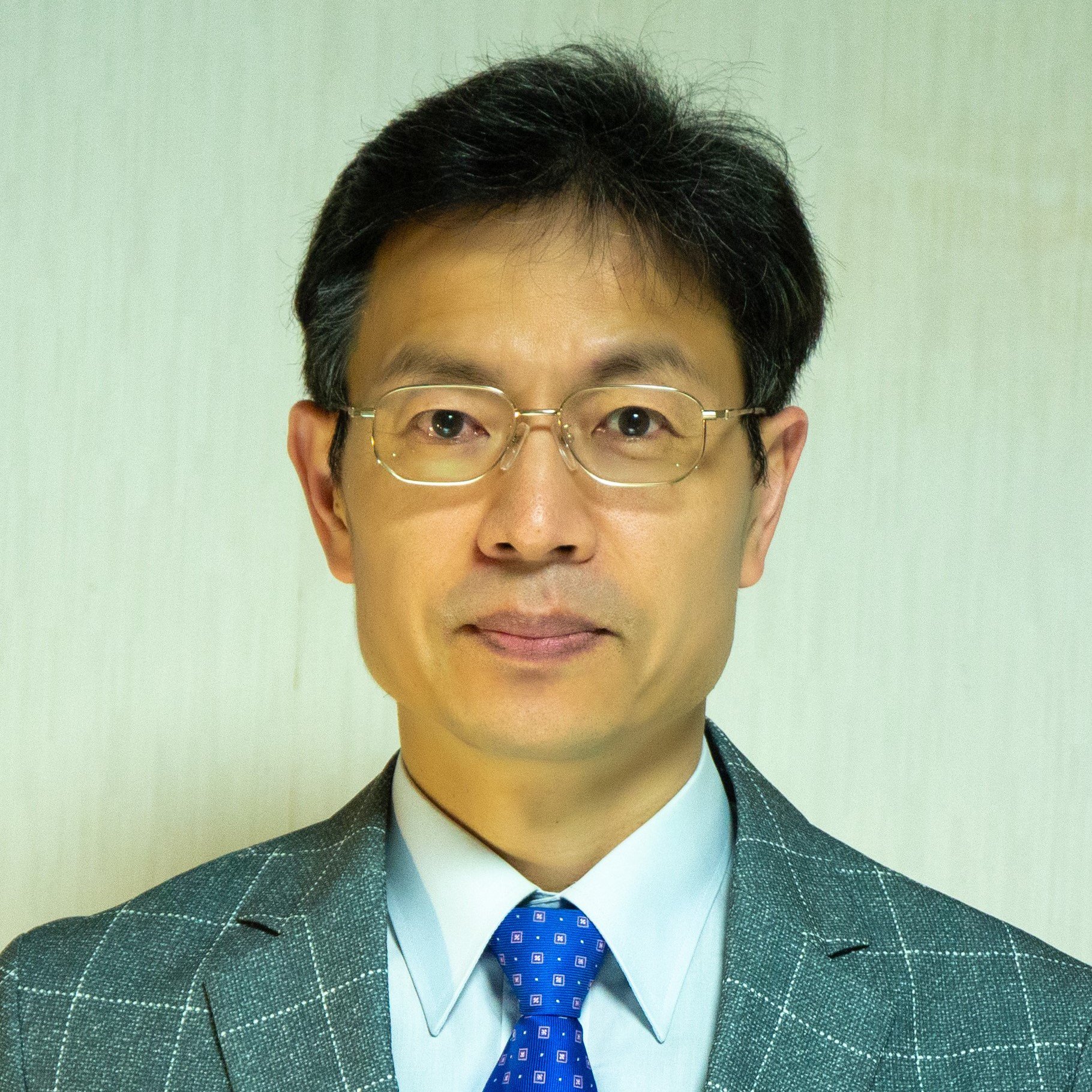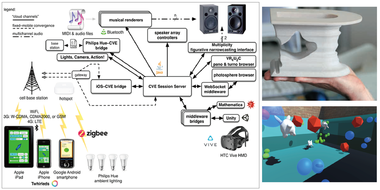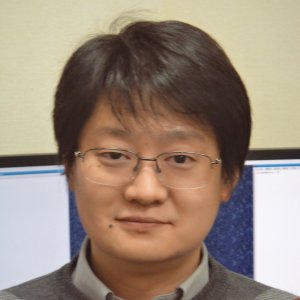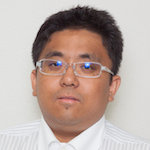Laboratory Introduction
Information Security Laboratory
Cybersecurity |
|||
|
While the development of information and communication technology has made people's lives more convenient, cyber attacks and cyber crimes have emerged as a negative aspect. |
NAKAMURA Akihito |
||
Cognitive Science Laboratory
Cognitive Science |
|||
|
Everyone has a family of friends named "Signal". They can be sensed everyday in our life. When you listen to the music, it is a 1D signal processed by ears. When you read a manga book, it is a 2D matrix signal processed by eyes. When you play games, the motion of the character in 3D world is connecting your feeling basically by the mixed signal system with sound, images and haptics. They are processed by our brain to build a fantastic experience that developers and artists hope to show us. Our lab cares signal and how it is working very much. Beyond the ability of sensing, it is able to help us to make decisions for not only behaviors as operating a machine or getting profit from financial trading in physical world, but also for creating smart behaviors of NPC as interaction in virtual world. |
LI Xiang |
||
Computer Organization LaboratoryDevelopment of IoT and AI systems using Raspberry Pi and FPGA |
|
||
|
One of the goals of our laboratory is to develop small, low energy consumption edge AI devices. In this laboratory, we are developing systems and circuits for the Internet-of-Things (IoT) and AI using microcontroller boards called Raspberry Pi and digital circuits called Field Programmable Gate Array (FPGA). In this laboratory, students can learn widely from hardware and software development to prototype construction. Please visit our website to learn more about our current research projects (especially the results of our students). |
SAITO HiroshiSenior |
||
Computer Networks LaboratoryMeasurement and Recognition on Human Actio |
|
||
|
We are creating a digital internet world, which is independent from the real analog world we living in. But recently, as the development of the intelligent sensing technologies, the two worlds are merging together, so that in the near future, people could hardly to discriminate their difference. Our lab is focus on creating various new intelligent sensing technologies to facilitate such merging between the digital world and analog world. |
JING Lei |
||
Active Knowledge Engineering Laboratorygame AI |
|
||
|
AI (artificial intelligence) is the "brain" of a computer. As a general rule, we are always striving to make AI smarter. For example, in the same way that the facial recognition function of a smartphone is capable of recognizing a face even with glasses on, a robot vacuum cleaner can avoid socks that have been left on the floor. Sometimes, however, this cleverness can also cause undesirable results. For example, clever AI can easily defeat humans in games such as chess or shogi without making any silly mistakes. Therefore, simply "creating clever AI" is not always the goal. We are using games to research various AI systems. Games need to be fun, so we need to understand what type of AI will serve as a suitable teammate or an intriguing enemy character. In our research, we focus primarily on "realistic" or human-like AI. For example, in sports games such as soccer and fighting, it is desirable to have various opponents with diverse qualities and habits, and it is important to ensure that the characters in the game do not make robot-like movements at that time. Studying human behavior is essential for creating such "realistic" characters. First, we record the behavior of characters and analyze what behavior they have in common. This is a difficult task, and our approach will depend on the genre of the game. Currently, we are studying the relatively simple games of tennis, fighting, and soccer. Soccer is particularly interesting because it requires understanding the movements of the team as a whole rather than individual plays. Games provide a simple, enjoyable experimental environment using AI systems. At the same time, we believe that our research results can be applied to areas other than games. "Fun AI" and "human-like AI systems" have significant potential for education and medical care. By studying AI, we can understand why we feel something is "fun" or "real," and therefore better understand ourselves. |
MOZGOVOY Maxim |
||
Pattern Processing Laboratory
Pattern Recognition |
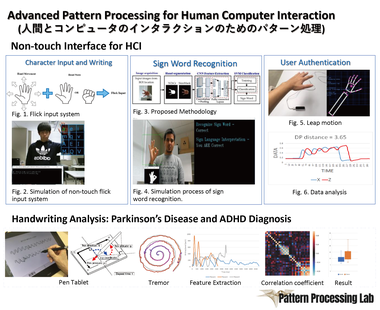 |
||
|
Our laboratory focuses primarily on human-computer interaction, pattern processing, and recognition based on signal and image analysis. As part of our pattern processing research, we have done lots of research in hand written character recognition, signature verification, font generation, human identification, human activity recognition and so on. |
SHIN Jungpil |
||
Computer Arts Laboratory
game design |
|||
|
Multimodal interaction refers to the integration of control (input) and display (output) of media, including visual, auditory, and haptic modalities: graphics, sound, and touch. The Spatial Media Group in the Computer Arts Lab conducts research on practical and creative interfaces to enhance communication and expression: 3D graphics and panoramic ("360°") imagery; spatial sound, audio, and computer music; digital typography, hypermedia and electronic publishing; smartphone & mobile computing; XR (extended reality): VR (virtual reality), MR (mixed reality) & AR (augmented reality) for immersive sensation. We investigate various kinds of stereoscopic displays ("3D" imagery) that express not only width and height but also depth,and multichannel (polyphonic) spatial audio ("3D sound") systems with rich, dynamic soundscapes, realtime applications that close the feedback loop between input and output for immediate reaction and live, online experience. We explore user interfaces that incorporate vision, hearing, and proprioception, including 3D printing, physical rigging (connection of physical controllers to virtual objects), IoT (internet of things) and "ubicomp" (ubiquitous computing) for cyberphysical systems. Groupware is software for groups, allowing teamwork and collaboration, including conferencing, team design, and musical ensemble performance. Our focus is exploration of networked multiuser interfaces with realtime multimodal interactivity, including visual musical systems, games & toys, simulations, and story-telling. |
COHEN Michael |
||
Biomedical Information Engineering LaboratorySeamless monitoring and comprehensive interpretation of physiological information for daily healthcare |
|
||
|
(1) Introduction to the R&D outcomes in seamless monitoring of physiological information applicable for daily life environment. (2) Introduction to the examples of comprehensive interpretation of physiological information accumulated over a long term period using various advanced machine learning algorithms, and its application in daily healthcare. For more details, please visit bitlab.u-aizu.ac.jp/ |
CHEN Wenxi |
||
Computer Graphics LaboratoryVisually appealing computer visualization |
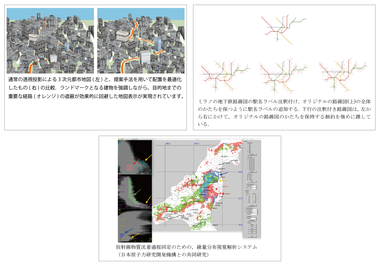 |
||
|
We are researching computer visualization, a technology that helps people understand information by converting various types of data into visual information that can be seen by the human eye. Web page of research contents: Demonstration Video: Research introduction video (2020 version): |
TAKAHASHI Shigeo |
||
Database Systems LaboratoryRobot Information Engineering |
|
||
|
We are researching artificial intelligence that can be useful to robots and humans by using large amounts of data. Currently, I am working on the following research topics. 1. 2. 3. |
NAKAMURA Keita |
||
liberal arts education |
|
||
|
The University of Aizu expects its students to become rich and healthy in mind and body at the same time as attaining a high degree of expertise in computer science and technology, so they can graduate and take responsibility for the future. Center URL:u-aizu.ac.jp/labs/ccrs/ol2021/ol2021.pdf |
KARIMAZAWA,Hayato |
||
Phonetics and Phonology |
|
||
|
My main research interests involve sound systems in languages of the world. |
PERKINS Jeremy |
||






